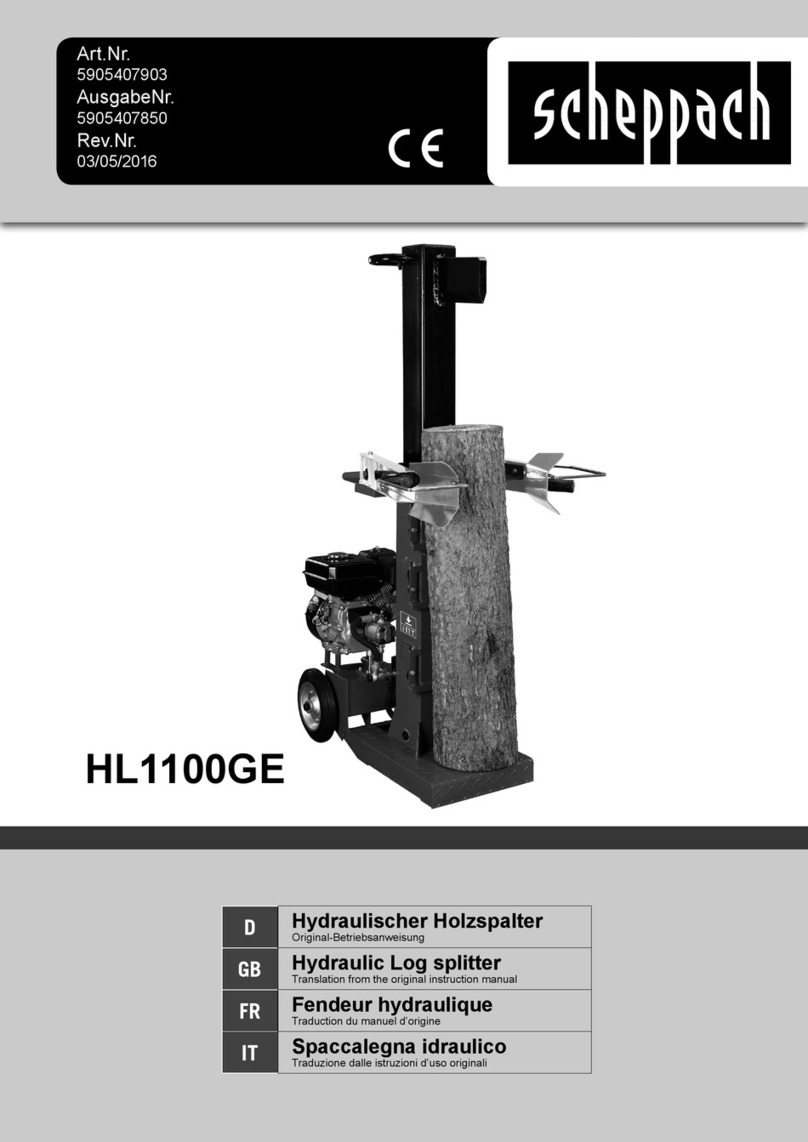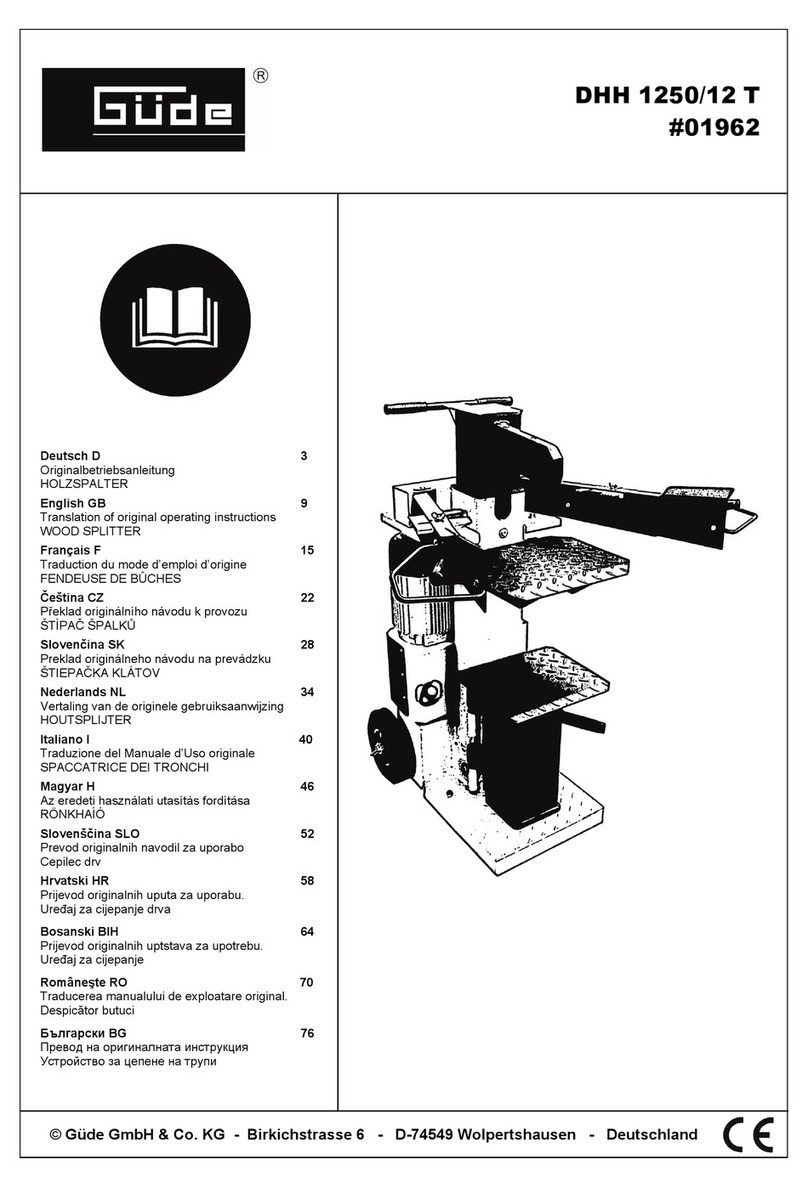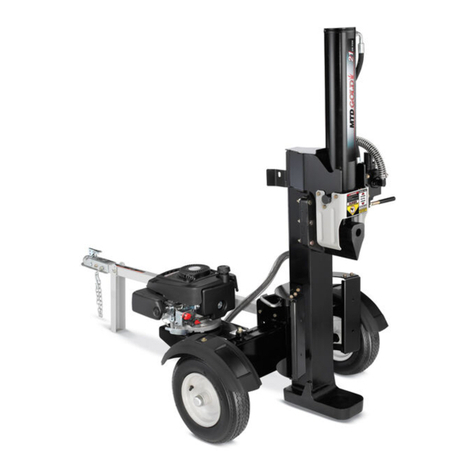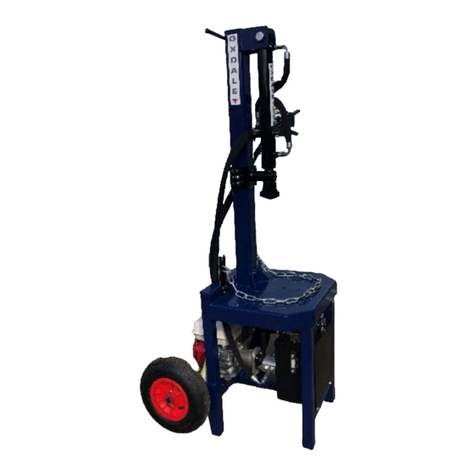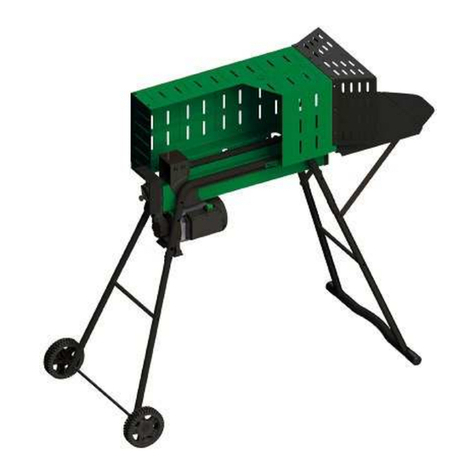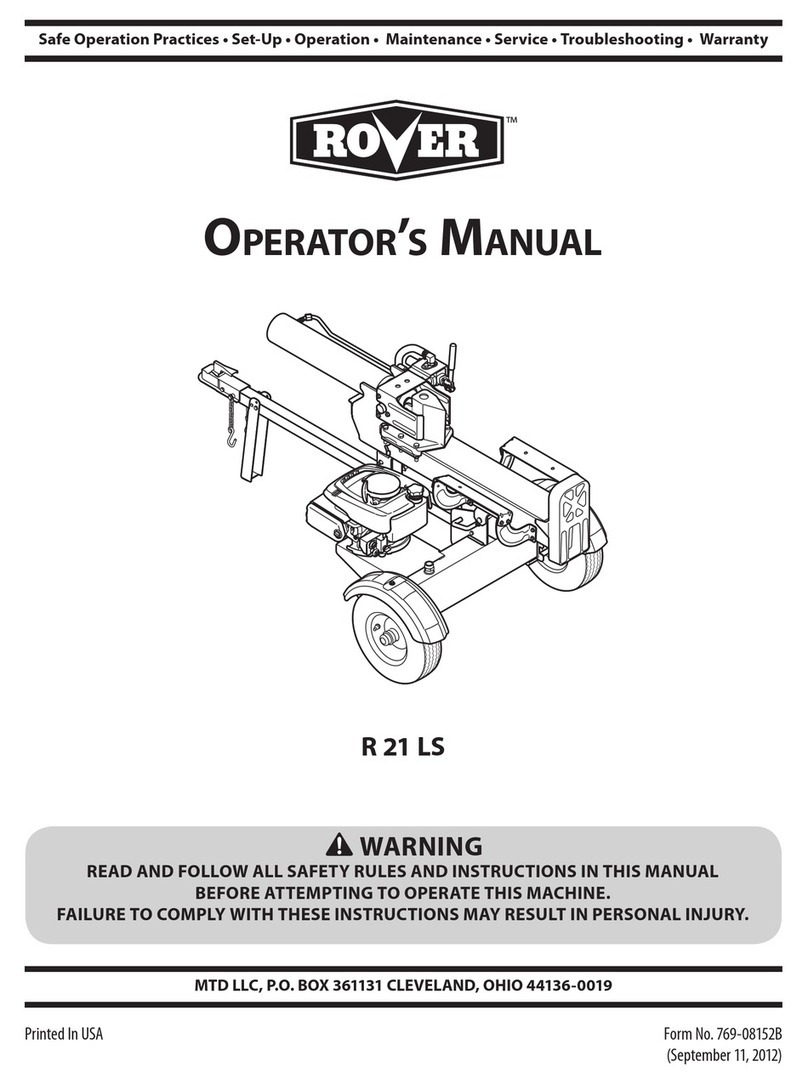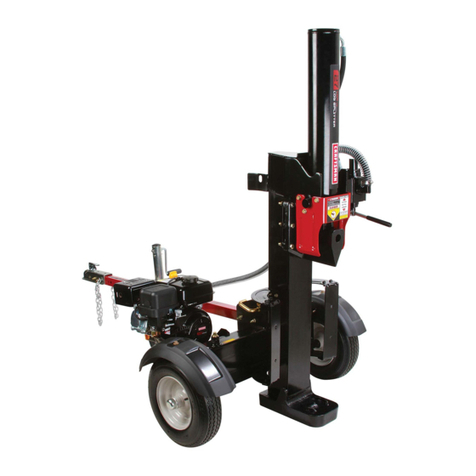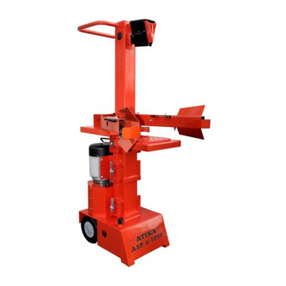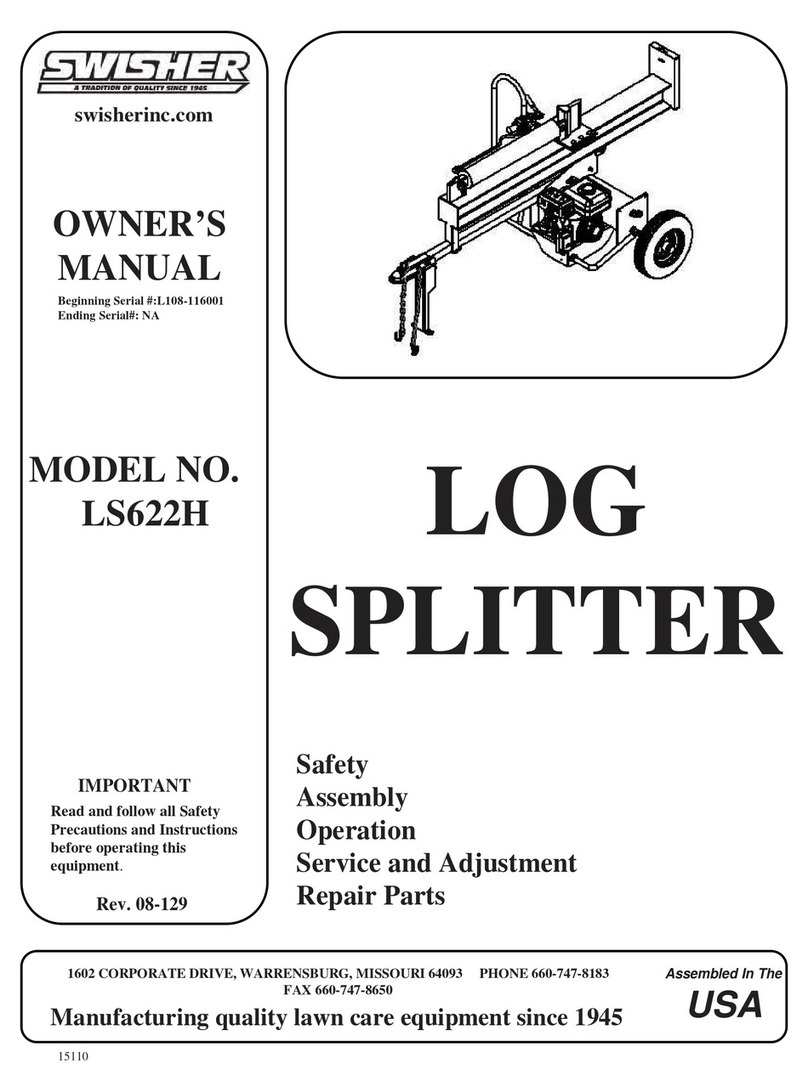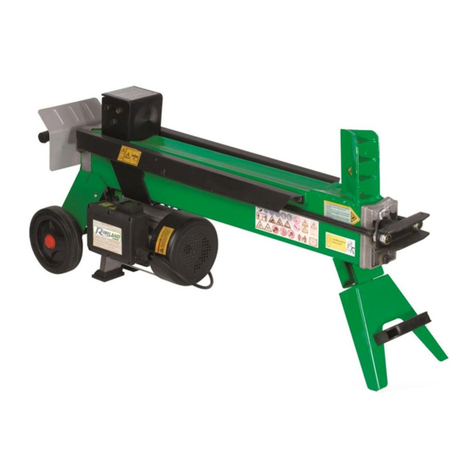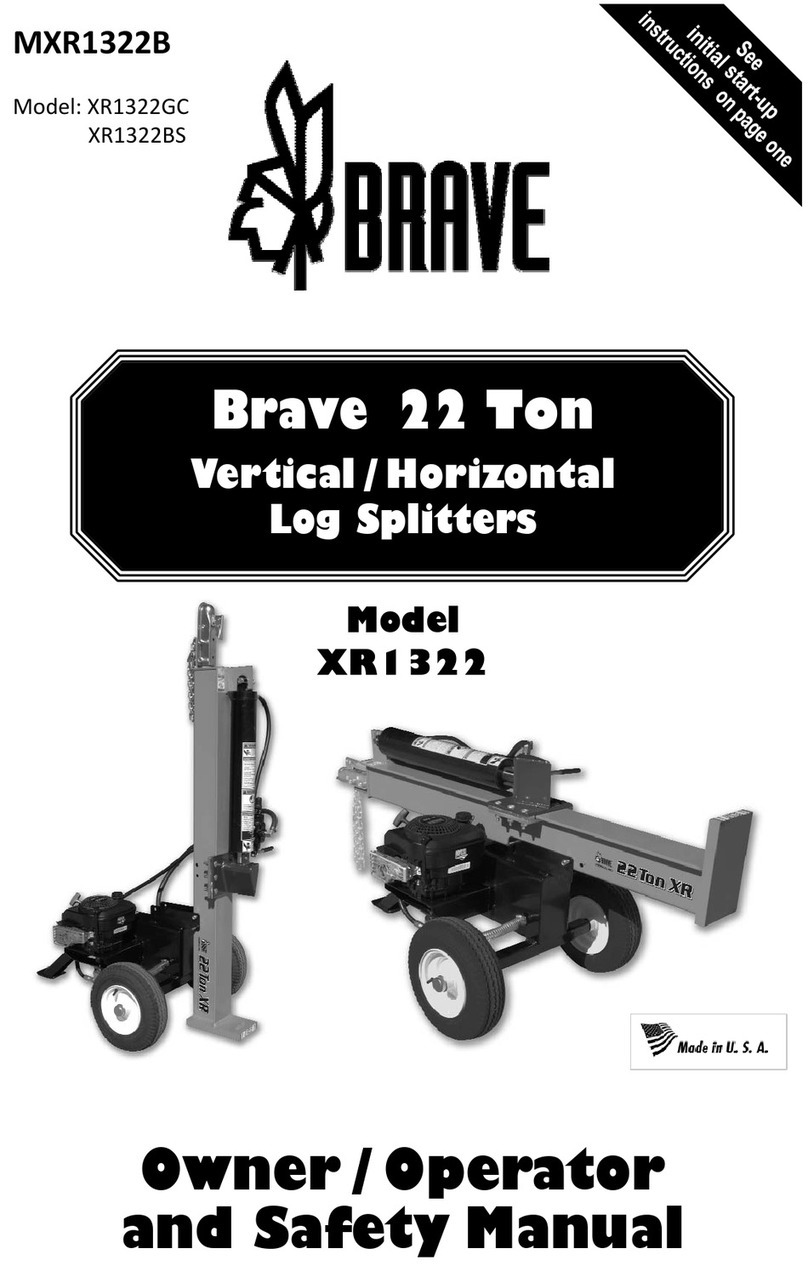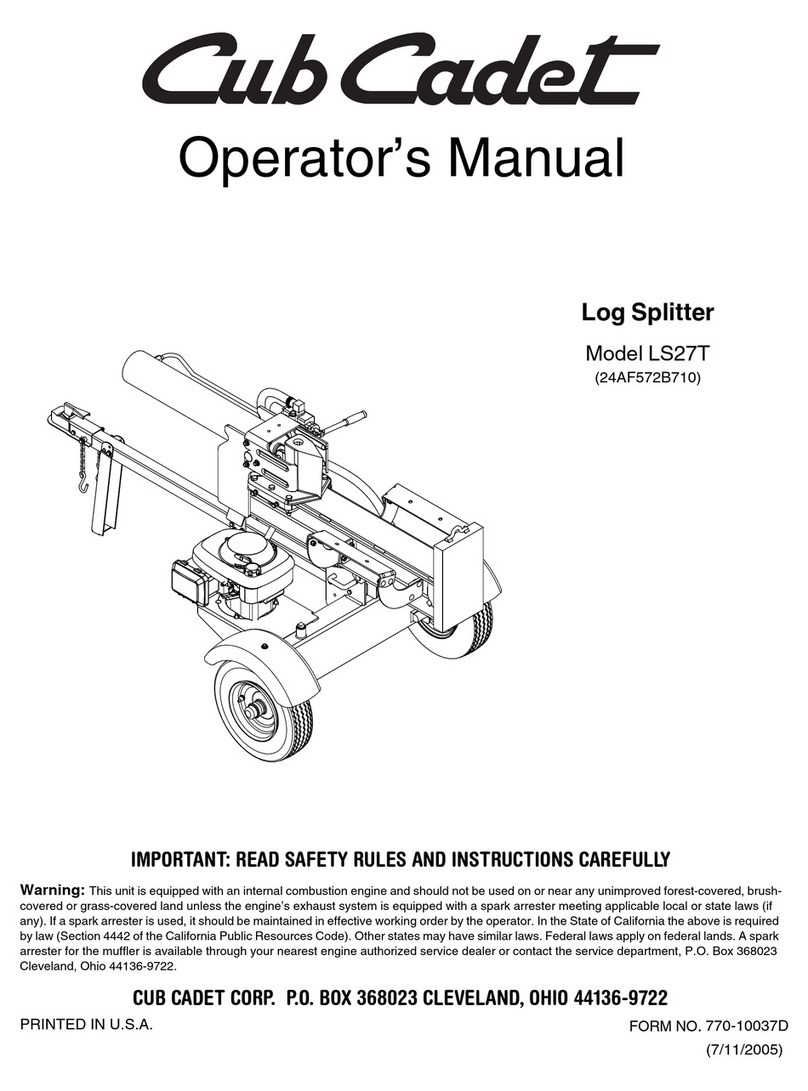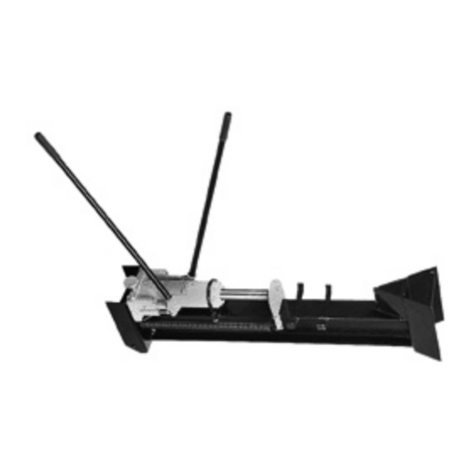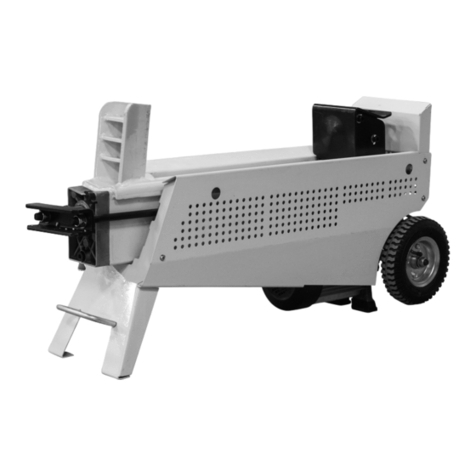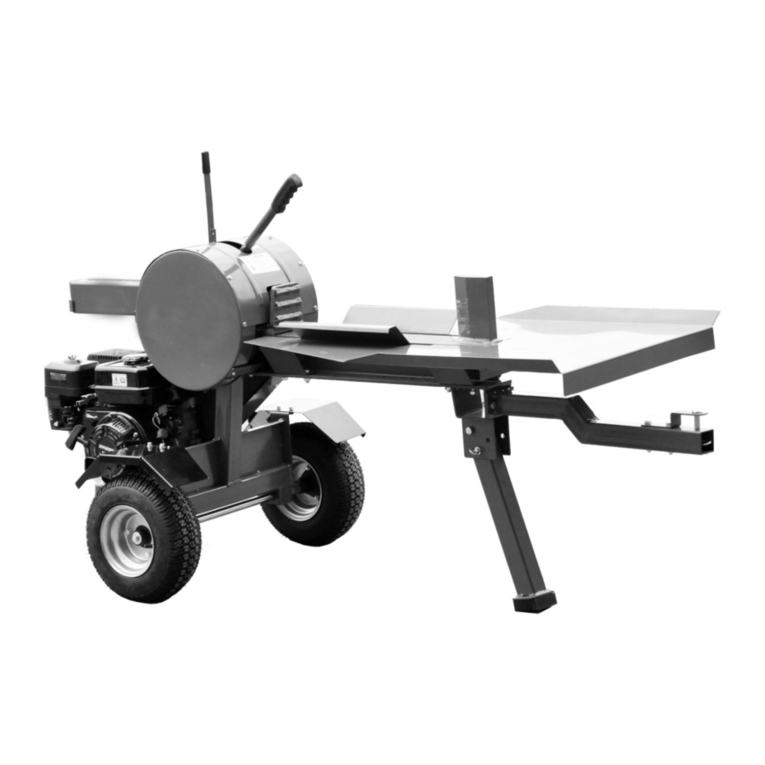AVERTISSEMENTS ET MISES EN GARDE
Vous devez lire attentivement et bien comprendre ce guide de l'utilisateur et les
étiquettes qui sont apposées sur la fendeuse elle-même.
On ne doit jamais se servir de la fendeuse si on est sous l'influence d'une drogue, d'une boisson
alcoolique ou d'un médicament qui pourrait affecter la capacité de l'utiliser correctement.
Placez la fendeuse de bûches sur une surface de travail ou un établi qui est de niveau, plat, stable
et à une hauteur de 60 à 75 centimètres. Il doit y avoir amplement d'espace et l'endroit choisi doit
aider l'utilisateur à rester sur ses gardes. Si la fendeuse a tendance à glisser ou à se déplacer,
boulonnez-la sur la surface de travail.
Votre aire de travail doit toujours être propre et bien éclairée. Les endroits encombrés invitent les
accidents et les blessures.
Ne vous servez pas de la fendeuse dans un endroit mouillé ou humide et ne l'exposez jamais à la
pluie.
Ne l'utilisez pas dans des endroits où des émanations provenant de peintures, de solvants ou de
liquides inflammables pourraient présenter un danger.
Vérifiez bien votre fendeuse avant de la mettre en marche. Ses dispositifs protecteurs
doivent être bien en place et en bon état. Prenez l'habitude de toujours vous assurer que
les clavettes et les clés de réglage ont été retirées avant la mise en service de la
machine. Avant de vous en servir, vous devez remplacer les pièces endommagées,
manquantes ou défectueuses.
Ne portez pas de vêtements trop amples, ni des gants inappropriés, une cravate
ou des bijoux (bagues, montres-bracelets). Ils pourraient se prendre dans les
pièces mobiles.
Quand vous travaillez, on vous conseille de porter des gants protecteurs qui
ne conduisent pas l'électricité, ainsi que des chaussures non dérapantes. Si
vos cheveux sont longs, portez un couvre-chef protecteur, pour les empêcher
de se prendre dans la machinerie.
Toute fendeuse de bûches peut parfois projeter des objets étrangers dans les yeux.
Un tel accident peut causer une lésion oculaire permanente. Portez toujours des
lunettes de sécurité. Vos lunettes habituelles n'ont que des lentilles résistantes aux
chocs. Ce ne sont pas des lunettes de protection.
Ne mettez pas la fendeuse de bûches sur le sol pour vous en servir. À ce moment-là, l'utilisateur
serait dans une position incommode et devrait approcher son visage trop près de la machine. Il ris-
querait alors d'être frappé par des débris ou des copeaux de bois.
CONSIGNES DE SÉCURITÉ ET AVERTISSEMENTS SYMBOLE APPOSÉ
SUR LA MACHINE
FAMILIARISEZ-VOUS AVEC VOTRE FENDEUSE DE BÛCHES
DROGUES, BOISSONS ALCOOLIQUES ET MÉDICAMENTS
ÉVITEZ LES SITUATIONS DANGEREUSES
INSPECTEZ VOTRE FENDEUSE DE BÛCHES
HABILLEZ-VOUS CORRECTEMENT
PROTÉGEZ VOS YEUX ET VOTRE VISAGE
2




















